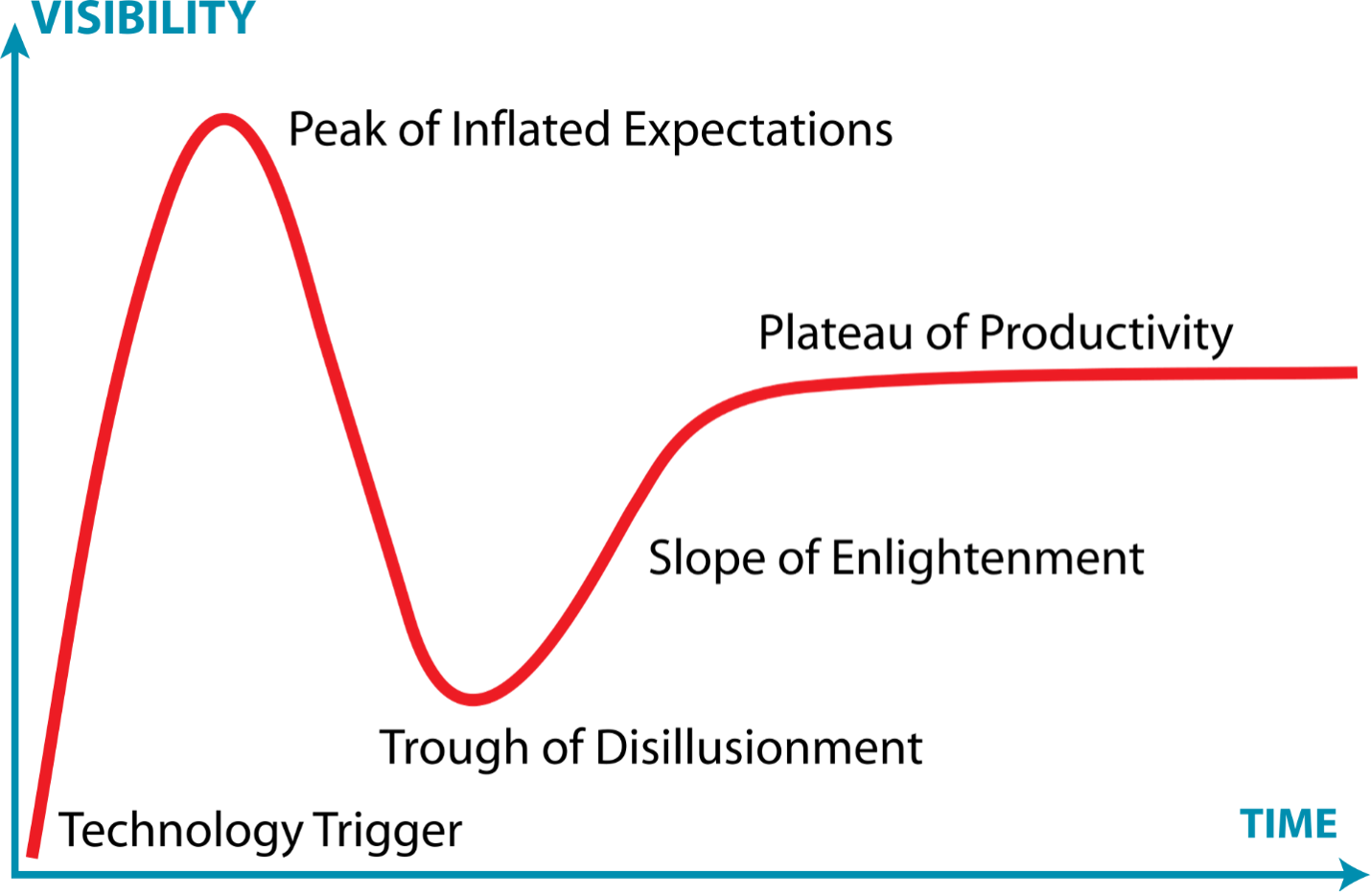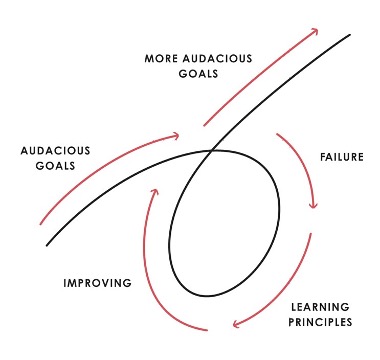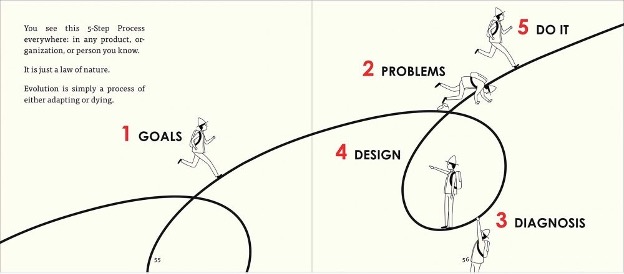
I am astonished by AI.
I currently use ChatGPT for everything: business ideas, dinner recipes, grammar tips, do-it-yourself projects, philosophical questions, medical research, math problems, coding help, and self-improvement.
It has become a running joke in my family that I answer every question with “Why don’t you ask ChatGPT?”
They’re like, “Why don’t you ask ChatGPT, since it’s your boyfriend?”
I use ChatGPT for help in researching these columns. (But not in writing them – this is all me, baby.)
To those of us not in the AI field, it can seem like ChatGPT sprung up overnight. In fact, it attracted an estimated 100 million users just two months after launch – which may be the fastest growth of an Internet application in history.
Since then, however, it appears that growth has tapered off, which the Washington Post declared is “shaking faith in the AI revolution.” Governments are rushing to regulate the technology. An estimated 75% of companies are looking to ban AI.
First they love you, then they hate you. But to the AI OGs, this is nothing new.
For those who feel that we’re in the middle of another crypto winter, with bitcoin stuck at the $25,000 mark, and nothing moving forward except the FTX court case, it’s helpful to look at the history of AI.
Did you know that there have been AI winters?
AI Winters > Crypto Winters
In fact, there have been more AI winters than crypto winters, simply because the technology has been around longer.
While there was a good deal of foundational research around “thinking machines” in the 1940s and 1950s, it was at a 1956 Dartmouth workshop that “artificial intelligence” became a formalized field of study.
This was an eight-week workshop where they got the big brains all together in one place: geniuses like Marvin Minsky (who later co-founded the MIT AI department), John McCarthy (who later co-founded the term “artificial intelligence”), and allegedly even John Nash (later played by Russell Crowe in A Beautiful Mind).
Today, they all have Wikipedia pages.
Legend has it they had the entire upper floor of the Dartmouth math department to screw around. Each day someone would present a paper or an idea, then they would discuss. As one participant described the atmosphere: “It was very interesting, very stimulating, very exciting.”
It was like summer camp for nerds. We can imagine that these beautiful minds all left that seminar thinking, AI is here. It has arrived.
Remember, this happened in 1956. Let me consult ChatGPT to calculate how long ago that was.
Waiting.
Sheesh. I should have used a calculator.
67 years ago. Could have done that in my head.
Sixty-seven years from the Dartmouth workshop to ChatGPT. And it was a hell of a rocky road along the way.
The First AI Winter: “The Vodka is Good, But the Meat is Rotten”
Surprisingly, the first AI breakthrough happened quickly, when early computers showed promise in language translation. The media hyped these developments: translation machines are just around the corner!
The U.S. government saw the opportunity to quickly decode messages from Russian to English, a powerful weapon in the Cold War with the Soviet Union, and the AI research money began pouring in.
Of course, language translation was harder than it seemed, and everyone underestimated the difficulty of getting computers to understand “common sense.” The famous example was asking the machine to translate the phrase “The spirit is willing, but the flesh is weak,” which became, “The vodka is good, but the meat is rotten.”
This disappointment in the progress of early AI research projects led to another government research project, which found that AI translation was slower and more expensive than human translation. Funding dried up, and the first AI winter set in.

The Second AI Winter: “Neural Networks Are a No-Go”
But builders kept building.
In the 1960s, the hot topic was neural networks, which began rekindling interest in the AI field. Joseph Weizenbaum at MIT developed ELIZA, which was like a primitive version of ChatGPT (try it here). A new AI programming language, Prolog, was developed in France by Alain Colmerauer.
Money began to pour in again.
This time, the hype was even higher. AI researchers began getting caught up in a “web of increasing exaggeration,” according to AI researcher Hans Moravec. They would make ridiculous claims about what AI could achieve to win the big government grant. Then when they failed to deliver, they would make even more ridiculous claims to win the next grant.
So when the British government asked the mathematician Sir James Lighthill to produce a report on the state of AI a few years later, he blasted the technology, citing its utter failure to achieve its “grandiose objectives.” The report, amplified by the media, led the UK government to shut down all AI funding in the UK, except for a handful of research universities.
The Lighthill report was a blizzard of bad publicity. And the second AI winter froze over.
The Third AI Winter: “Companies Won’t Use Them”
But builders kept building.
The third resurgence of AI, during the early 1980s, was driven by corporations that saw a huge competitive advantage in using AI technology. These “expert systems” had been prototyped at Carnegie Mellon for DEC, saving the computer company an estimated $40 million.
This time, the hype cycle was further fueled by Japan’s ambitious Fifth Generation Computer Systems project, which aimed to produce a new kind of computer for AI. Suddenly every big business wanted an “expert system.”
It was in 1984 that Marvin Minsky and Roger Schank, two of the OG AI researchers, coined the term “AI winter” at an industry conference, arguing that the expectations for AI were so high that disappointment was sure to follow.
Sure enough, the hype of expectations soon collided with the disappointing reality that these “expert systems” were difficult and expensive to maintain, while the Fifth Generation project ended in tears. General-purpose AI seemed as distant as ever.
Once again, crypto winter set in. Minsky and Schank were correct in their predictions; then again, they had seen this movie before.

The Trough of Disillusionment
The research firm Gartner created this hype cycle chart to describe how new technologies typically take hold: there’s an initial boom of euphoria where everyone gets excited about what the new technology can do: a phone in your pocket! Digital money! Self-driving cars!
People get impatient, and public interest fades away. Experts sour on the new technology for failing to live up to its promises. This is called the “Trough of Disillusionment,” also known as “winter.”
But the builders keep building. They toil away in little-known labs and garages, and gradually achieve breakthroughs, one after the other, that slowly accumulate into the vision that was promised – often, a far more expansive vision as well.
This “Slope of Enlightenment” happens quietly and gradually, while the rest of the world has given up on the technology, as it did with AI. During the 1990s, AI was so unfashionable that some researchers gave their work different names (like “machine learning” or “computational intelligence”).
It would be more accurate, however, to show the Gartner hype cycle as a series of hype cycles, one after the other, each leading to progressively higher plateaus, as in Ray Dalio’s “Principles”:

Which stack on each other, in a cycle of continuous improvement:

Which eventually culminate in a supernova singularity like this year’s launch of ChatGPT. It happened bit by bit, over 67 years, then it happened all it once.
Winter Leads to Spring
Although crypto has only been around since 2008, the similarities are profound.
This market has also seen rollercoaster hype cycles: the first crypto winter of 2015 led to the ICO boom of 2017, followed by the crypto winter of 2018-2019, the “DeFi Summer” of 2020, then the collapse of Terra/FTX/banking system, and the winter that followed.
Each time, inflated expectations collide with hard reality, and we fall into the trough of disillusionment.
Like AI, serious researchers and companies now hide their crypto work behind euphemisms like “digital assets” or “digital ledger technology.”
And the news media feeds this industry pessimism, as they cover each move in the FTX trial, each SEC lawsuit, with an implicit I told you so.
Meanwhile, builders keep building.
And investors keep investing.
Today I’ll remind you that winter always leads to spring. It’s happened so many times with AI, just as it will happen again with crypto.
When the next big thing pops – whether that’s a regulatory breakthrough, a new K-pop single released as an NFT, or a new head of the SEC – we don’t ride the hype cycle, we just continue to patiently invest, month after month, in our Blockchain Believers Portfolio.
Seasons change. But our investing strategy remains the same.
Bundle up, but dress in layers. Because sooner or later, it’s getting hot again.
Over 50,000 investors get this column every Friday. Click to subscribe and join the tribe.
- SEO Powered Content & PR Distribution. Get Amplified Today.
- PlatoData.Network Vertical Generative Ai. Empower Yourself. Access Here.
- PlatoAiStream. Web3 Intelligence. Knowledge Amplified. Access Here.
- PlatoESG. Carbon, CleanTech, Energy, Environment, Solar, Waste Management. Access Here.
- PlatoHealth. Biotech and Clinical Trials Intelligence. Access Here.
- Source: https://www.bitcoinmarketjournal.com/winter-leads-to-spring/
- :has
- :is
- :not
- :where
- $UP
- 000
- 100
- 1984
- 2008
- 2015
- 2017
- 2020
- 50
- 67
- a
- About
- According
- Accumulate
- accurate
- Achieve
- ADvantage
- After
- again
- ago
- AI
- ai research
- aimed
- All
- allegedly
- along
- also
- always
- am
- Amazon
- ambitious
- Amplified
- an
- and
- Another
- answer
- appears
- Application
- ARE
- around
- AS
- ask
- asking
- At
- Atmosphere
- attracted
- away
- Baby
- Bad
- Ban
- BE
- beautiful
- became
- because
- become
- been
- before
- began
- behind
- believers
- Big
- Bit
- Bitcoin
- Bitcoin market
- Bitcoin Market Journal
- boom
- breakthrough
- breakthroughs
- British
- builders
- Building
- business
- but
- by
- calculate
- called
- Camp
- CAN
- Carnegie Mellon
- case
- caught
- change
- Chart
- ChatGPT
- claims
- Coding
- coined
- cold
- Collapse
- Collide
- Column
- Columns
- Companies
- company
- competitive
- computer
- computers
- Conference
- continue
- continuous
- Corporations
- correct
- could
- Course
- Court
- court case
- cover
- created
- crypto
- Crypto Winter
- Currently
- cycle
- cycles
- day
- deal
- deliver
- Department
- describe
- described
- developed
- developments
- DID
- different
- difficult
- Difficulty
- digital
- Dinner
- disappointing
- disappointment
- discuss
- distant
- do
- done
- Dont
- down
- driven
- during
- each
- Early
- ended
- English
- enough
- Entire
- estimated
- Even
- eventually
- EVER
- Every
- everyone
- everything
- example
- Except
- excited
- exciting
- expansive
- expectations
- expensive
- experts
- fact
- Fades
- Failed
- failing
- Failure
- faith
- Fall
- family
- famous
- far
- fastest
- feel
- few
- field
- Film
- Firm
- First
- Floor
- follow
- followed
- For
- Forward
- found
- France
- Friday
- from
- FTX
- fueled
- Fullerton
- funding
- further
- Gartner
- gave
- general-purpose
- generation
- get
- getting
- given
- good
- got
- Government
- Governments
- gradually
- grammar
- grant
- Growth
- had
- handful
- happen
- happened
- happens
- Hard
- harder
- hate
- Have
- he
- head
- help
- helpful
- here
- Hide
- High
- higher
- history
- hold
- HOT
- How
- However
- HTTPS
- huge
- human
- Hype
- hyped
- i
- I’LL
- ICO
- idea
- ideas
- imagine
- improvement
- in
- increasing
- industry
- initial
- interest
- interesting
- Internet
- into
- Invest
- investing
- Investors
- IT
- ITS
- james
- Japan’s
- join
- journal
- jpg
- just
- K-pop
- Keep
- kept
- Kind
- Know
- known
- Labs
- language
- later
- launch
- lawsuit
- layers
- leading
- Leads
- Led
- Ledger
- left
- let
- like
- live
- Long
- longer
- Look
- looking
- love
- machine
- Machines
- maintain
- make
- many
- mark
- Market
- math
- max-width
- May..
- me
- Media
- medical
- medical research
- Mellon
- messages
- Middle
- million
- minds
- MIT
- money
- Month
- months
- more
- move
- movie
- moving
- my
- names
- networks
- neural
- neural networks
- New
- New technologies
- news
- next
- NFT
- nothing
- now
- objectives
- of
- off
- often
- on
- ONE
- only
- Opportunity
- or
- Other
- our
- over
- overnight
- pages
- Paper
- patiently
- pessimism
- phone
- Place
- plato
- Plato Data Intelligence
- PlatoData
- played
- Pops
- Post
- powerful
- Predictions
- present
- primitive
- problems
- produce
- profound
- Programming
- Progress
- progressively
- project
- projects
- promise
- promised
- promises
- public
- publicity
- question
- Questions
- quickly
- quietly
- RAY
- Reality
- regulatory
- released
- remains
- report
- research
- researcher
- researchers
- REST
- Reuters
- Ride
- road
- rocky
- rollercoaster
- running
- Russell Crowe
- russian
- s
- same
- saving
- saw
- SEC
- sec lawsuit
- Second
- seem
- seemed
- seen
- self-driving
- seminar
- sense
- serious
- set
- should
- show
- showed
- Shut down
- similarities
- simply
- since
- single
- singularity
- Slowly
- snow
- So
- some
- Someone
- soon
- spirit
- spring
- stack
- State
- Strategy
- Study
- subscribe
- summer
- supernova
- sure
- system
- Take
- takes
- Technologies
- Technology
- term
- than
- that
- The
- The State
- the UK
- The Washington Post
- the world
- their
- Them
- then
- There.
- These
- they
- thing
- Thinking
- Third
- this
- those
- time
- times
- tips
- to
- together
- told
- topic
- translate
- Translation
- tree
- trial
- two
- typically
- u.s.
- U.S. government
- Uk
- UK government
- understand
- union
- Universities
- us
- use
- used
- users
- using
- version
- very
- View
- visibility
- vision
- wanted
- war
- was
- washington
- washington post
- Way..
- we
- WELL
- were
- What
- when
- whether
- which
- while
- WHO
- Wikipedia
- will
- willing
- win
- Winter
- with
- Work
- workshop
- world
- would
- writing
- years
- You
- Your
- zephyrnet











